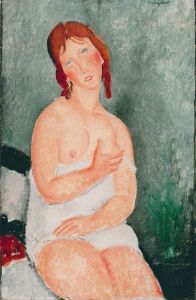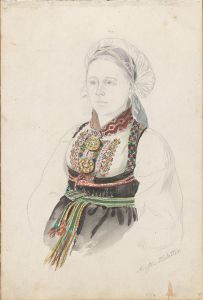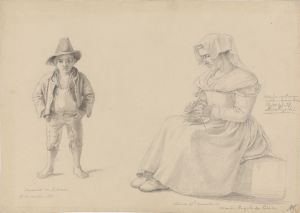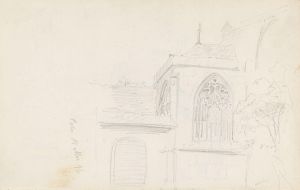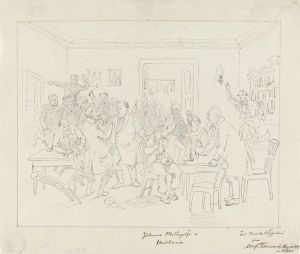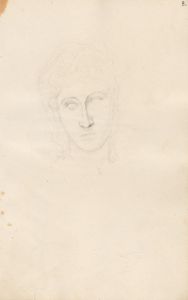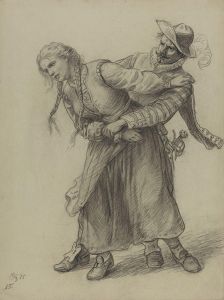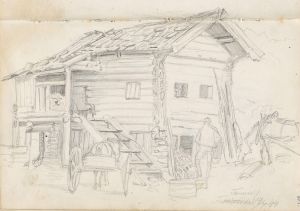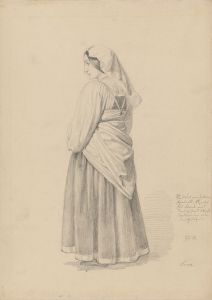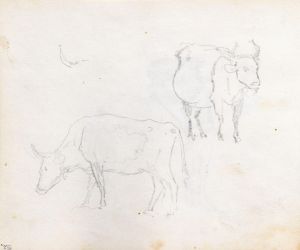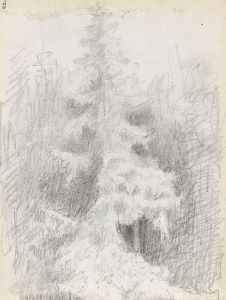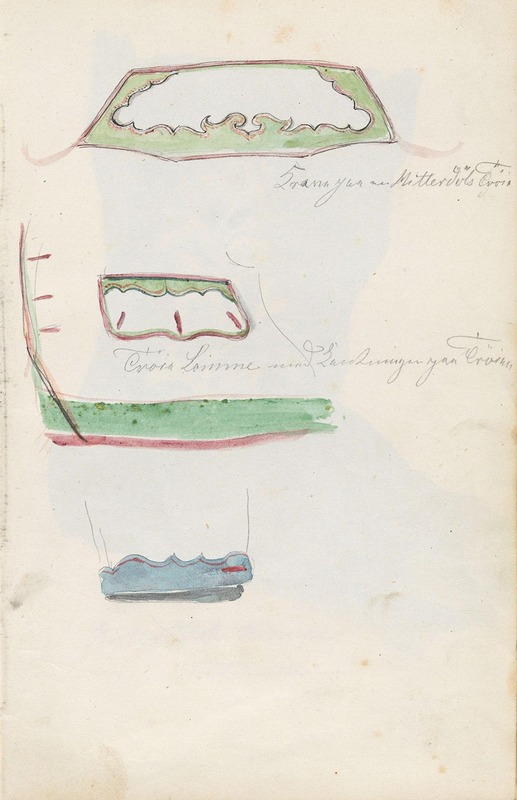
Detaljer av mannstrøye fra Heddal
A hand-painted replica of Adolph Tidemand’s masterpiece Detaljer av mannstrøye fra Heddal, meticulously crafted by professional artists to capture the true essence of the original. Each piece is created with museum-quality canvas and rare mineral pigments, carefully painted by experienced artists with delicate brushstrokes and rich, layered colors to perfectly recreate the texture of the original artwork. Unlike machine-printed reproductions, this hand-painted version brings the painting to life, infused with the artist’s emotions and skill in every stroke. Whether for personal collection or home decoration, it instantly elevates the artistic atmosphere of any space.
Adolph Tidemand was a prominent Norwegian painter in the 19th century, known for his detailed and culturally rich depictions of Norwegian life and traditions. One of his notable works is "Detaljer av mannstrøye fra Heddal," which translates to "Details of a Man's Shirt from Heddal." This painting is a fine example of Tidemand's focus on Norwegian folk culture and his meticulous attention to detail.
Adolph Tidemand was born on August 14, 1814, in Mandal, Norway. He studied art in Copenhagen and later in Düsseldorf, Germany, where he became associated with the Düsseldorf school of painting. This school was known for its detailed and realistic style, which greatly influenced Tidemand's work. Throughout his career, Tidemand was deeply interested in the traditions and daily lives of Norwegian people, often traveling to rural areas to gather inspiration and material for his paintings.
"Detaljer av mannstrøye fra Heddal" is a testament to Tidemand's dedication to capturing the essence of Norwegian cultural heritage. Heddal is a village in Notodden municipality in Telemark county, Norway, known for its rich traditions and historical significance. The village is home to Heddal Stave Church, the largest stave church in Norway, which is a symbol of the region's medieval history and architectural heritage.
In this painting, Tidemand focuses on the intricate details of a traditional Norwegian man's shirt, known as a "mannstrøye." This garment is an essential part of the traditional Norwegian costume, often worn during special occasions and celebrations. The shirt is typically made of wool or linen and is characterized by its elaborate embroidery and patterns, which vary from region to region. By highlighting the details of the mannstrøye, Tidemand not only showcases the craftsmanship involved in creating such garments but also emphasizes the importance of clothing as a cultural identifier.
Tidemand's work is significant for its ethnographic value, as it provides a visual record of Norwegian folk customs and attire during the 19th century. His paintings often served as a means of preserving cultural traditions at a time when Norway was experiencing significant social and economic changes. As industrialization and modernization began to alter the Norwegian landscape, Tidemand's art became a way to document and celebrate the country's rural heritage.
Throughout his career, Tidemand collaborated with other artists, most notably Hans Gude, with whom he created several iconic works depicting Norwegian landscapes and rural life. While "Detaljer av mannstrøye fra Heddal" focuses on a specific aspect of Norwegian costume, it is part of Tidemand's broader oeuvre that collectively captures the spirit of Norway's cultural identity.
Adolph Tidemand passed away on August 25, 1876, but his legacy lives on through his art, which continues to be celebrated for its historical and cultural significance. His works are housed in various museums and collections, including the National Gallery in Oslo, where they remain an important part of Norway's artistic heritage. "Detaljer av mannstrøye fra Heddal" stands as a testament to Tidemand's skill as a painter and his commitment to preserving the rich tapestry of Norwegian folk culture.





